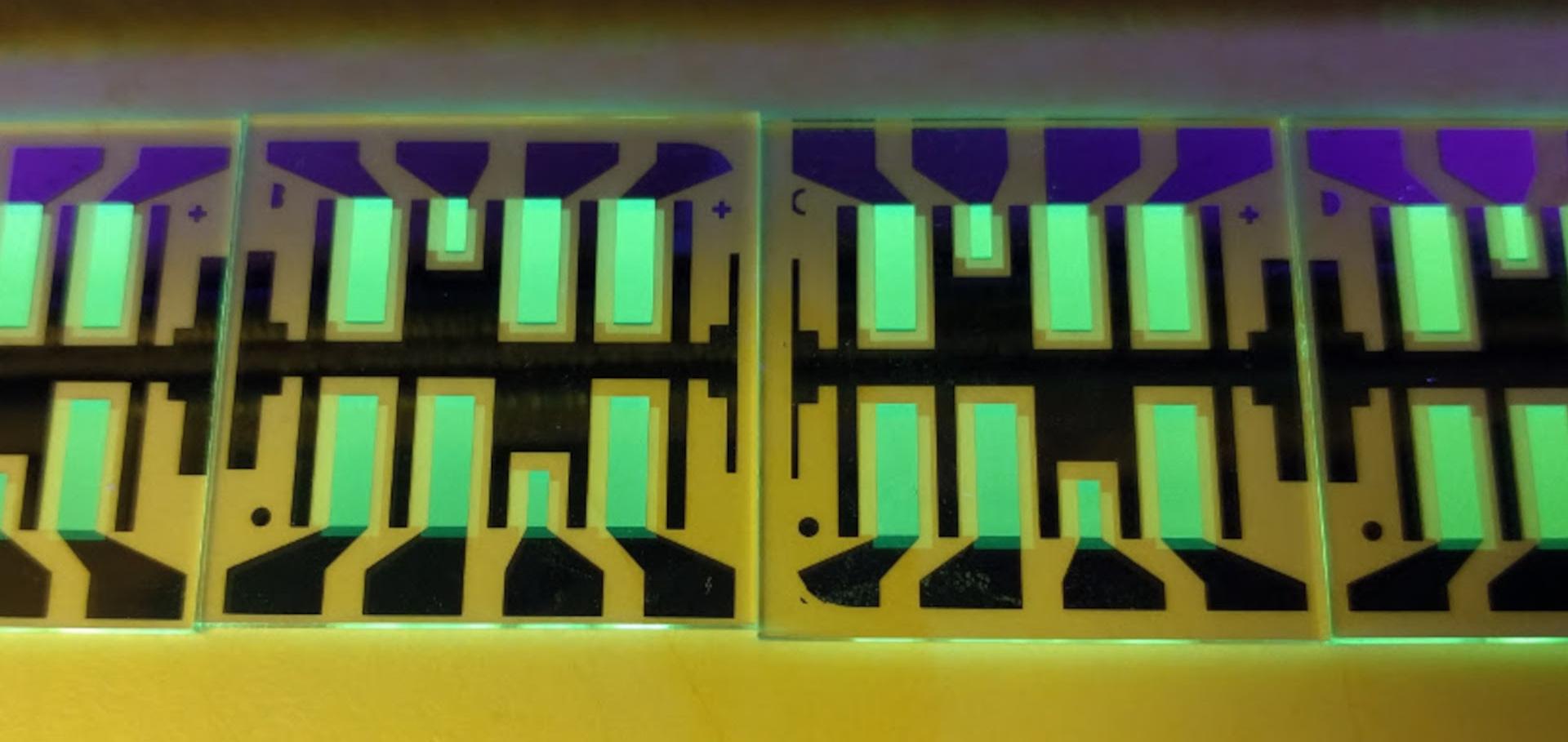Perspectives of Organic and Perovskite‐Based Spintronics
Advanced Optical Materials Wiley (2021) 2100215-2100215
Electron spin as fingerprint for charge generation and transport in doped organic semiconductors
Journal of Materials Chemistry C Royal Society of Chemistry (RSC) (2021)
Abstract:
<p>We use the electron spin as a probe to gain insight into the mechanism of molecular doping in a p-doped zinc phthalocyanine host across a broad range of temperatures (80–280 K) and doping concentrations (0–5 wt% of F6-TCNNQ).</p>Chain Conformation Control of Fluorene-Benzothiadiazole Copolymer Light-Emitting Diode Efficiency and Lifetime.
ACS applied materials & interfaces 13:2 (2021) 2919-2931
Abstract:
The β-phase, in which the intermonomer torsion angle of a fraction of chain segments approaches ∼180°, is an intriguing conformational microstructure of the widely studied light-emitting polymer poly(9,9-dioctylfluorene) (PFO). Its generation can in turn be used to significantly improve the performance of PFO emission-layer-based light-emitting diodes (LEDs). Here, we report the generation of β-phase chain segments in a copolymer, 90F8:10BT, containing 90% 9,9-dioctylfluorene (F8) and 10% 2,1,3-benzothiadiazole (BT) units and show that significant improvements in performance also ensue for LEDs with β-phase 90F8:10BT emission layers, generalizing the earlier PFO results. The β-phase was induced by both solvent vapor annealing and dipping copolymer thin films into a solvent/nonsolvent mixture. Subsequent absorption spectra show the characteristic fluorene β-phase peak at ∼435 nm, but luminescence spectra (∼530 nm peak) and quantum yields barely change, with the emission arising following efficient energy transfer to the lowest-lying excited states localized in the vicinity of the BT units. For ∼5% β-phase chain segment fraction relative to 0% β-phase, the LED luminance at 10 V increased by ∼25% to 5940 cd m<sup>-2</sup>, the maximum external quantum efficiency by ∼61 to 1.91%, and the operational stability from 64% luminance retention after 20 h of operation to 90%. Detailed studies addressing the underlying device physics identify a reduced hole injection barrier, higher hole mobility, correspondingly more balanced electron and hole charge transport, and decreased carrier trapping as the dominant factors. These results confirm the effectiveness of chain conformation control for fluorene-based homo- and copolymer device optimization.Direct observation and evolution of electronic coupling between organic semiconductors
Physical Review Materials American Physical Society 5:1 (2021) 015601
Abstract:
The electronic wave functions of an atom or molecule are affected by its interactions with its environment. These interactions dictate electronic and optical processes at interfaces, and is especially relevant in the case of thin film optoelectronic devices such as organic solar cells. In these devices, charge transport and interfaces between multiple layers occur along the thickness or vertical direction, and thus such electronic interactions between different molecules—same or different—are crucial in determining the device properties. Here, we introduce an in situ spectroscopic ellipsometry data analysis method called differential analysis in real time (DART) with the ability to directly probe electronic coupling due to intermolecular interactions along the thickness direction using vacuum-deposited organic semiconductor thin films as a model system. The analysis, which does not require any model fitting, reveals direct observations of electronic coupling between frontier orbitals under optical excitations leading to delocalization of the corresponding electronic wave functions with thickness or, equivalently, number of molecules away from the interface in C60 and MeO-TPD deposited on an insulating substrate ( Si O 2 ) . Applying the same methodology for C60 deposited on phthalocyanine thin films, the analyses shows strong, anomalous features—in comparison to C60 deposited on Si O 2 —of the electronic wave functions corresponding to specific excitation energies in C60 and phthalocyanines. Translation of such interactions in terms of dielectric constants reveals plasmonic type resonance absorptions resulting from oscillations of the excited state wave functions between the two materials across the interface. Finally, reproducibility, angstrom-level sensitivity, and simplicity of the method are highlighted showcasing its applicability for studying electronic coupling between any vapor-deposited material systems where real-time measurements during thin film growth are possible.Molecular doped organic semiconductor crystals for optoelectronic device applications
Journal of Materials Chemistry C 8:43 (2020) 14996-15008


